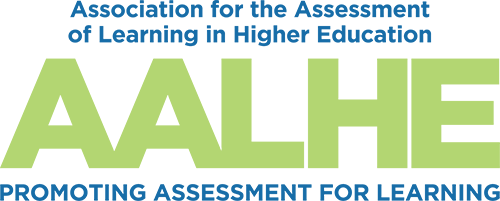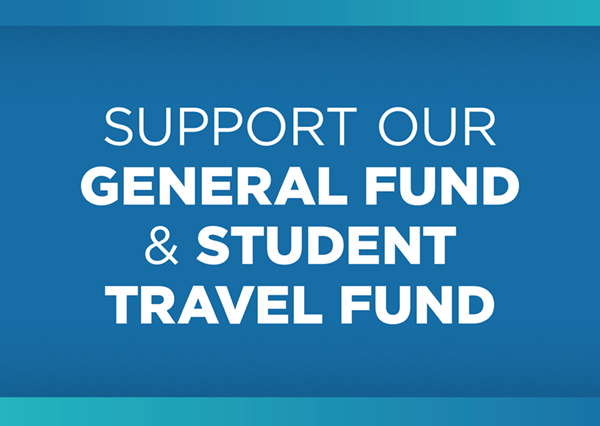- Home
- About AALHE
- Board of Directors
- Committees
- Guiding Documents
- Legal Information
- Organizational Chart
- Our Institutional Partners
- Membership Benefits
- Member Spotlight
- Contact Us
- Member Home
- Symposium
- Annual Conference
- Resources
- Publications
- Donate
EMERGING DIALOGUES IN ASSESSMENTMy Journey with Formative Assessment
November 17, 2021 Stacie M. ShanksWhen I was an undergraduate at the University of Tennessee, I took an anthropology course taught by a doctoral candidate. Her policy was that if we turned in the homework for each class and used her feedback to inform our writing and subsequent assignments, we would get full credit on all work. Most work was a review or critical analysis of a journal article, and instead of trashing our grades with points taken off for structure, grammar, and formatting, she showed us how to fix our recurring errors and avoid them going forward. Any content we had misunderstood was covered during the next class meeting. I found myself wanting to turn in the best work I could and improve as much as I could while I had an instructor willing to help me and allow me the opportunity to earn that full credit. As it turned out, my instructor was conducting a research study and writing an article to publish about our class. She collected data on the quality of our work and our responses to and use of feedback. She compared the data from our class with data from another of her classes that she graded traditionally, assigning letter grades to work with no chance for revision or gaining back lost points. Our work, she said, was “head and shoulders” above her other class that received traditional grading. With no danger of penalty for "failure," our work was imaginative, innovative, and out of the box. This instructor did not use the label "formative assessment" to describe the method she used, but that is what it was. The central practice of formative assessment is providing corrective feedback to promote student growth and understanding; it is not to be used punitively or as part of a grade. Essential components of formative assessment include student participation in setting goals, self and peer reflection, and guided questioning by the instructor (Moss & Brookhart, 2019). The reflection and guided questioning aspects allow students to dig into their own thinking and processes such as reading and writing. They can track their errors and their own progress. This metacognition is a valuable skill for students to learn and apply in all of their classes and in life in general. Additionally, guided questioning not only pushes students to think more deeply, it also serves as an informal progress check so instructors can gauge where students are or are not improving. Formative assessment is integral to the instructor’s being able to tweak lessons or presentation style in real-time based on student and class need (Hattie & Zierer, 2018). As a community college instructor and former high school teacher, and, of course, a student, I have a complicated history with formative assessment. While I was teaching high school, I did not use formative assessment the way I do today with my college students. I did not find it effective to tell teenagers they could not fail an assignment because it was not graded, and I, mistakenly in some cases, felt many students were too immature to self-assess and question creatively. I only used formative assessment if I had a class that I really thought could handle it and would benefit from it. Several years ago, I transitioned to a community college teaching First Year Seminar (FYS), a freshman orientation course focusing on skills like note taking, reading comprehension, and using campus resources. As I read more about formative assessment, I decided to try again. Departmentally, most FYS instructors assign one large writing assignment that encompasses the skills taught throughout the semester. My students work toward this essay all term. To help my students successfully complete the culminating essay, I use formative assessment for all the preliminary work including journals, research, and MLA formatting, and to mitigate common grammar errors. The ability to customize feedback to each class, group, or individual as needed is the aspect I really like about formative assessment. Customization gives the instructor more work initially, but as students make progress, grading becomes easier. For example, I cover comma splices with almost every class because it is among the most common errors in the first writing assignment. Alternatively, there are always a few students who did not learn MLA format in high school, so I work with them in small groups or individually. By building toward one summatively graded writing assignment, I can address, and students can learn from, their writing mistakes throughout the semester. My students and I begin our semesters together by discussing class norms, the skills students will focus on developing, my methods for providing feedback, and how students can use my feedback. After that introductory discussion, I track recurrent errors individually for each student and most common recurrent errors as a class, which we address together. I need to remind myself, however, against being too helpful and becoming a crutch that students rely on instead of managing their own long-term learning (Brown et al., 2014). One way to help develop more student autonomy in improving their own writing is to address one example of an error and task students with finding similar mistakes and fixing them. Students sometimes simply need a model, example, or explanation. Through directed questioning, I frequently ask students to reflect, discuss, and write about their own learning. I see students in my FYS classes grow dramatically in their communication and writing skills and confidence every semester. Notably, student response to feedback when it is not tied to a grade is so different than when that letter grade is hanging over them. The feedback aspect of formative assessment helps mitigate the fear of failure, which can "poison learning" (Brown et al., 2014, p. 91). Formative assessment is encouraging for students; indeed, just making feedback available and establishing a culture of improvement, whether a student addresses each specific comment or not, “builds effort” (Jensen, 2013, p. 86). I get many more rough drafts, in-depth questions, and attempts to improve from students when they know they have another chance to show improvement than if they just lost points and we moved on. When I employ formative assessment, instead of taking offense or getting angry, students can see that I really do care and am focused on helping them make progress. I do not grade everything formatively; I do have a director, department head, and dean who eventually expect actual grades from summative assessments. Throughout the semester, I emphasize to my students process and progress over daily products with the understanding that we are working towards an actual product that will be traditionally graded. My explanation of formative assessment is not one of an assessment expert but one of a practitioner’s journey as she finds her way through a 20-year history with formative assessment—from guinea pig to skeptic to devotee. References Brown, P. C., Roediger, H.L., & McDaniel, M. A. (2014). Make it stick. Belknap.
Hattie, J., & Zierer, K. (2018). 10 mindframes for visible learning: Teaching for success. Routledge.
Jensen, E. (2013). Engaging students with poverty in mind: Practical strategies for raising achievement. ASCD.
Moss, C. M., & Brookhart, S. M. (2019). Advancing formative assessment in every classroom: A guide for instructional leaders (2nd ed.). ASCD.
|

